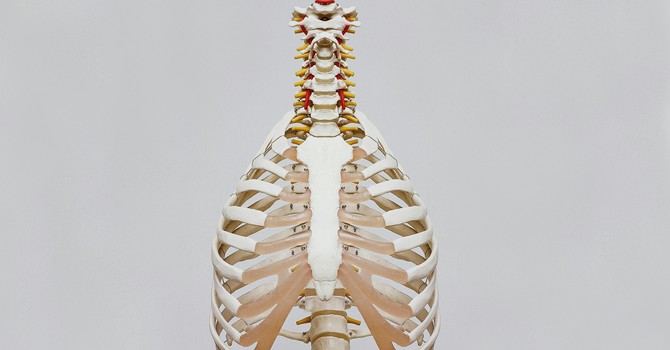I assess and treat chronic pelvic health issues through a whole-body lens. In doing this, I aim to help people re-establish a neutral pelvis position in which their pelvic floor, core and hip muscles can activate and function properly. This requires that we address posture.
When it comes to posture, there is certainly a bias towards opening the chest and pulling the shoulders blades back and down. I’ve worked as a personal trainer, kinesiologist, and obviously physiotherapist, and I’ve observed that chest opening, scapular retraction, and scapular depression exercises are the go-to remedies for posture. While it’s not completely wrong to do this, it is not a complete answer.
Our bodies are 3-dimensional, and accordingly, our posture is too.
When we overdo the chest opening and pulling shoulder blades back and down, we create a scenario where we shorten and compress our back. But the opposite is the thing that everyone is avoiding - slouching. And rightfully so, we would shorten and compress our front in that case. To add another layer of complexity, we are more than just a back and front. We have sides too, and we are capable of trunk rotation. Many people I meet are side bent and rotated.
In all of these scenarios, it would be difficult to find and maintain a neutral pelvis position. In fact, no part of the trunk is neutral. In turn, some muscles are too short while others are too long. The trunk muscles are not resting at that optimal length where they readily activate to meet demands like bending over, maintaining continence, or lifting a heavy load. Many of the people I see are stuck in a position where their core muscles cannot respond to changing demands.
So, what do we do if the solution is not to open the chest then pull the shoulder blades back and down? Amongst others, the slinky is a common visualization I use to retrain postural habits:
- Pay attention to your entire trunk, especially your ribcage
- Imagine it as a slinky
- Slowly and gently create space between each spiral of the slinky. There should be space in the front, the back, the left side, and the right sides of your slinky.
This is one of my favourite ways to think about posture. Instead of focussing on one plane and one strategy, it encourages the user to experience posture 3-dimensionally.
This cue and method is informed by Dr. LJ Lee’s Thoracic Ring Approach. More on this to come in my next post.





